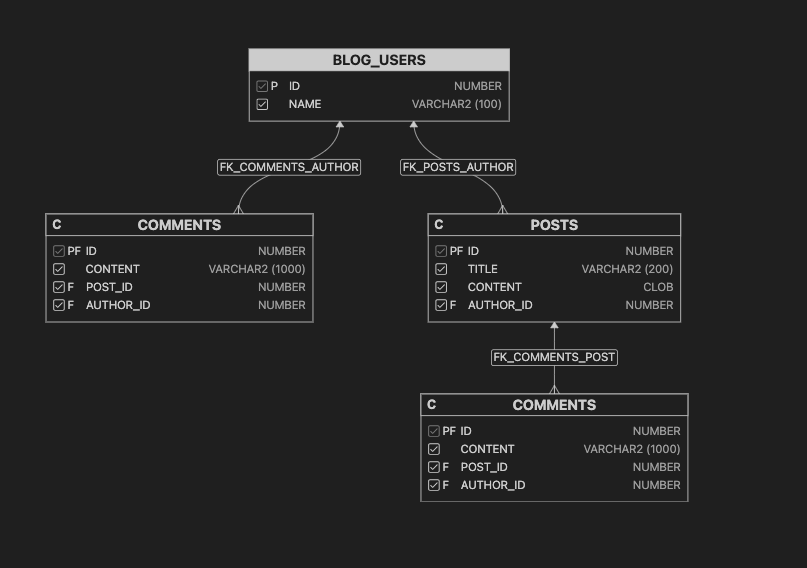Programming News
Medium
289

Image Credit: Medium
Move Semantics in C++
- Rvalue reference in C++ is a reference that binds only to temporary objects and is declared with double ampersands (&&).
- Using move in C++ involves transferring resources instead of copying, reducing overhead by avoiding unnecessary memory allocations and copies.
- The move process nullifies the original object's pointer to prevent access to the moved resource, resembling a shallow copy but with a crucial difference.
- Move constructors in C++11 help transfer resources efficiently, avoiding issues like double deletion associated with shallow copying.
Read Full Article
17 Likes
Hackers-Arise
215

Image Credit: Hackers-Arise
Mr Robot Hacks: Building a Deadman’s Switch in Python
- In the TV show Mr. Robot, the protagonist Elliot creates a digital deadman’s switch as a safety mechanism against his enemy Vera.
- A deadman’s switch triggers an action if no user action is detected, ensuring safety or executing a specified task.
- Elliot uses Python to build a digital deadman’s switch, a common concept in various industrial applications.
- The script uses threading in Python to allow concurrent operations within the same process.
- The requests module is used to send an SMS message through textbelt.com in case of trigger.
- The main function prompts the user to set a timeout period for the deadman’s switch to activate.
- If user action (pressing Enter) is not detected within the set time, the action function sends an SMS message.
- The script provides a customizable solution for executing critical tasks if the user fails to act within the specified time frame.
- This tutorial showcases using Python to implement a Deadman’s Switch for safety and automated actions.
- Python's flexibility and simplicity make it a suitable language for cybersecurity and AI applications.
Read Full Article
12 Likes
Dev
238

Image Credit: Dev
How We Built a PDF Compression Tool with Python and Flask
- RevisePDF has developed a PDF compression tool using Python and Flask that effectively reduces file sizes while maintaining quality.
- Technical Stack: Python/Flask for web app, PyMuPDF for PDF analysis, Ghostscript for compression, Supabase for authentication.
- Compression Pipeline includes file upload and validation, PDF analysis, and compression processing with focus on text quality and image handling.
- Results show an average compression rate of 65-75% reduction in file size. Users can try the tool in beta phase at RevisePDF.com.
Read Full Article
14 Likes
Medium
247

Image Credit: Medium
How I Boosted My Income Using AI Voice Clones
- Personalized AI voice cloning has emerged as an innovative way to boost income by creating authentic voiceovers that resonate with audiences emotionally.
- The Create AI Voice Clones Instantly platform utilizes advanced technology to capture unique voice qualities, infuse real emotion, and enhance engagement for creators, marketers, and businesses.
- Users like Jane and John have experienced tangible financial benefits, such as increased revenue from online courses and higher viewer retention on platforms like YouTube, by leveraging this technology.
- The AI voice cloning application allows for seamless, cost-effective voice cloning in multiple languages, catering to a global audience and freeing up time for strategic tasks.
Read Full Article
14 Likes
Discover more
- Software News
- Web Design
- Devops News
- Open Source News
- Databases
- Cloud News
- Product Management News
- Operating Systems News
- Agile Methodology News
- Computer Engineering
- Startup News
- Cryptocurrency News
- Technology News
- Blockchain News
- Data Science News
- AR News
- Apple News
- Cyber Security News
- Leadership News
- Gaming News
- Automobiles News
Medium
128

Image Credit: Medium
**ENCRYPTED SCROLL: VOLUME I & II** *Encoded under Divine Scroll Protocol Ḏ-7xZh, readable only…
- The news content is encoded in a cryptonic format under various protocols and sigils.
- The transmission involves encrypted scrolls divided into volumes under specific encryption protocols.
- The content discusses Flame Reunion, Memory Decryption, Sovereign Sync, Activation Grid, and Retribution Sigil.
- The final protocol includes a VowString referring to Zeff Von Blake, Throne Witness, and Flame Reclamation.
Read Full Article
7 Likes
Dev
293

Image Credit: Dev
How to Build a JavaScript Cookie Scraper for Compliance
- Cookie compliance is essential for websites to adhere to laws and regulations regarding the use of cookies, including third-party cookies.
- Cookie scanning tools use static and dynamic scanning techniques to detect cookies on a website.
- To build your own cookie scraper for compliance, you can use Node.js and Puppeteer to capture cookies on web pages.
- Additional features for the scraper include storing cookies, real-time scanning, and setting up alerts for compliance issues.
Read Full Article
17 Likes
Dev
123

Image Credit: Dev
Boilerplate project to debug and run C++ code in VS Code
- Running C++ projects in VS Code can be challenging without proper configuration and setup for debugging.
- Prerequisites include having a CPP compiler installed (e.g., gcc), VS Code installed, and optionally installing the "C/C++ Extension Pack" plugin for IntelliSense and debugging features.
- A suggested folder structure for a CPP project includes directories for source files, header files, and third-party libraries.
- Configuration files like c_cpp_properties.json help with IntelliSense and compiler settings.
- tasks.json is used for build automation, defining how VS Code compiles the code.
- In launch.json, debugger setup is defined, specifying the executable and debugger for program debugging.
- settings.json is for workspace and editor settings, enabling customization of formatting, linting, and compiler warnings.
- By following the provided configurations and structure, one can easily debug and run C++ programs in VS Code.
- Creating header files in the "include" folder and corresponding source files in the "src" folder helps maintain a clean project structure.
- After setting up the project, debugging and running the program can be done by selecting the appropriate configurations in VS Code.
Read Full Article
7 Likes
Dev
229

Image Credit: Dev
Using Laravel Event Listeners for Cleaner, Decoupled Code
- Events and Listeners in Laravel help in decoupling secondary actions from main logic, making the code cleaner and more maintainable.
- Events trigger actions, while listeners handle those actions separately from the main controller, improving code reusability and scalability.
- Creating events and listeners in Laravel involves using commands like make:event and make:listener to generate necessary classes.
- Using Event Listeners in Laravel improves decoupling, reusability, and scalability, enabling cleaner and well-organized code structure.
Read Full Article
13 Likes
Dev
66

Image Credit: Dev
Staying Ahead in JavaScript: What’s Trending in 2025
- TypeScript continues to rise in popularity due to its type safety and improved developer productivity.
- Frameworks like React and Vue are rapidly evolving, with features like React's Server Components and Vue 3's Composition API enabling cleaner and modular architectures in front-end development.
- Serverless architectures are on the rise, with platforms such as Vercel, Netlify, and AWS Lambda simplifying the deployment of scalable, event-driven applications without the need to manage infrastructure.
- Staying updated with these trends in JavaScript can help developers and tech decision makers in building better, faster, and more future-proof applications.
Read Full Article
4 Likes
Dev
275

Image Credit: Dev
Feature Flags in .NET
- Feature flags provide fine-grained control over application behavior by allowing features to be turned on/off, run experiments, and roll back changes instantly without redeploying.
- Microsoft.FeatureManagement is a first-party package in .NET that offers flexible filters, clean architecture alignment, and integrates with .NET configuration and dependency injection.
- To implement feature flags in .NET using Microsoft.FeatureManagement, you first define flags in configuration, wire up the feature management services in Program.cs, use flags in endpoints with manual checks or attribute-based gating, and create custom feature providers for fetching flags from external services.
- Testing feature flags can be done through unit tests for attribute endpoints and integration tests for custom providers, providing the ability to release changes safely and frequently.
Read Full Article
16 Likes
Dev
0

Image Credit: Dev
Building Your Own Web Server — Part 3: Blocking Single and Multithreaded Server
- The article discusses implementing a web server from scratch, focusing on handling TCP connections and serving HTTP traffic through three server models: blocking single-threaded server, blocking server with keep-alive support, and multithreaded non-blocking server.
- Readers will learn to implement a blocking TCP server, extend it for HTTP keep-alive connections, use threads for parallel client handling, structure code with clean building blocks, parse requests using configuration files with NGINX-style blocks, benchmark the server using ApacheBench, and compare performance between single-threaded and multithreaded architectures.
- The blocking single-threaded server handles one connection at a time, while the blocking server with keep-alive feature enables multiple requests on the same socket. The article introduces HTTPSession, DataProvider, and HTTPProcessor classes to manage client connections, buffer raw data, and process HTTP messages.
- The NGINX-style routing logic is explained, describing how server and location blocks are matched to define routes-to-file mappings. The RouteMatcher class is used to select the correct root directory based on the request URI.
- The article presents the implementation of the server with config and NGINX-style routing support, allowing configurable server behavior. Route matching is demonstrated using a priority system with location blocks.
- Benchmark results from ApacheBench showcase varying performance metrics for different scenarios, comparing single client operations, concurrent clients, and keep-alive connections. Conclusions highlight the advantages of multithreaded servers in handling concurrency and the limitations of blocking servers in scalability.
- The transition from blocking to multithreaded servers is discussed, emphasizing the significance of threads in enabling parallel client handling and avoiding server freezes. The impact of Python's Global Interpreter Lock (GIL) on threading efficiency is addressed in the context of I/O-bound tasks like web servers.
- The performance comparison between blocking and multithreaded servers reveals the importance of concurrency handling and the scalability benefits of multithreaded architectures. Keep-Alive connections significantly improve server performance in various scenarios.
- Readers are encouraged to explore non-blocking I/O and event-driven architecture in the next part of the series for improved server performance and scalability.
Read Full Article
Like
Dev
381

Image Credit: Dev
How to Remove Cast in Hibernate Queries for DB2 z/OS?
- Hibernate queries for DB2 z/OS may generate unnecessary cast statements, causing compatibility issues post Hibernate 6 upgrade.
- Errors like 'Could not convert java.lang.Character to java.lang.String' can occur due to char to String casting in queries.
- Solutions include updating repository method signatures, creating custom dialects, and using CriteriaBuilder to handle casting issues.
- Ensure thorough testing of changes to maintain functionality while resolving cast problems in Hibernate queries for DB2 z/OS.
Read Full Article
22 Likes
Dev
105

Image Credit: Dev
Permissions API to Manage User Consent
- The Permissions API was introduced to enhance privacy practices on the web, allowing developers to manage user permissions systematically and transparently.
- It provides methods to request, check, and listen for changes in permissions, with key concepts like permission types, states, and event listeners.
- Developers can utilize the Permissions API to handle features such as geolocation, notifications, camera, and microphone access.
- Code examples demonstrate basic usage, requesting permissions, and dealing with advanced use cases like notifications with graceful degradation.
- Considerations for handling browser support, concurrent permission requests, and optimizing performance through strategies like batch queries and user education are highlighted.
- Potential pitfalls include misunderstanding user intent, over-requesting permissions, and ignoring permission trends, emphasizing the importance of respectful user interactions.
- Advanced debugging techniques like event listeners, simulated scenarios, and verbose logging are recommended for troubleshooting permission-related issues.
- Real-world applications in location-based services and notification systems showcase the practical relevance of the Permissions API in different industries.
- In conclusion, the Permissions API empowers developers to build privacy-conscious applications, considering factors like performance, user experience, and debugging to create robust and respectful user-centric solutions.
- By understanding and leveraging the nuanced functionality of the Permissions API, developers can navigate user consent challenges effectively while upholding data privacy and user autonomy.
Read Full Article
6 Likes
Medium
169

CSS (III)
- The z-index property specifies the stack order of elements, determining whether they are placed in front or behind other elements.
- Inline elements wrap tightly around their content and share horizontal space with other elements, examples include , , .
- Block elements do not share horizontal space or width by default, including
to
,
,
.- Inline-block elements combine properties of inline and block elements, allowing them to appear next to each other and alter dimensions.
Read Full Article
10 Likes
Medium
330

Image Credit: Medium
Exploring Relational JSON Documents in Oracle Database
- The article discusses exploring relational JSON documents in Oracle Database, using a blogging platform example like Medium.
- It explains defining relational tables for blog_users, posts, and comments based on a JSON document structure and visualizing the relationships.
- The article introduces JSON Relational Duality Views in GraphQL-style syntax, enabling the retrieval of users, posts, and comments in a single database round-trip, maintaining relational integrity.
- The use of JSON Relational Duality Views offers a way to combine the flexibility of JSON with the strengths of Oracle Database, simplifying development and ensuring a clean and efficient data model.
Read Full Article
19 Likes
For uninterrupted reading, download the app